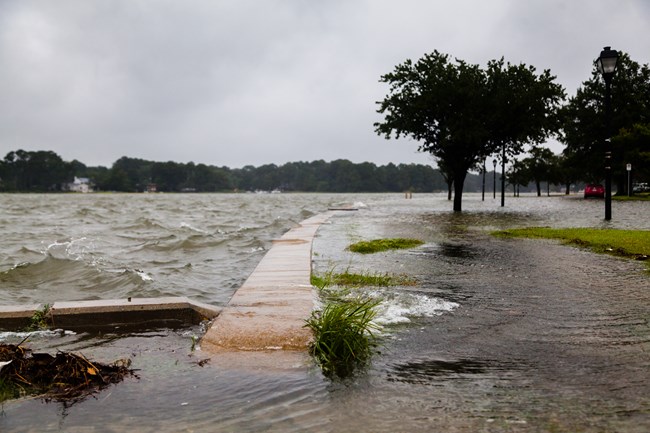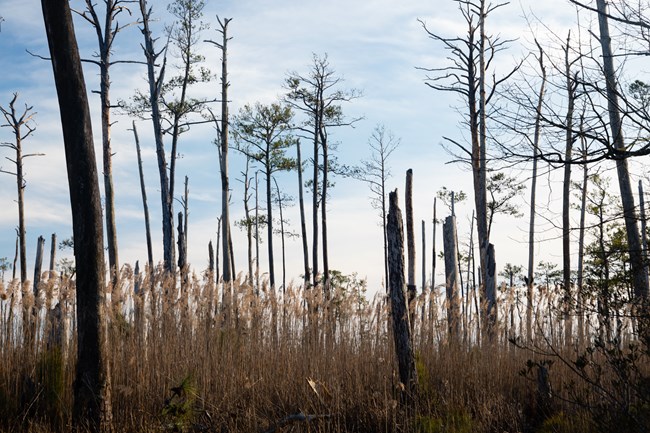|
The 11,600-mile coastline of the Chesapeake Bay is what makes our region a natural and cultural treasure. Unfortunately, it also makes our region one of the locations most vulnerable to climate change in the United States. Many of the effects of climate change are already impacting the Bay and its communities.

Skyler Ballard / Chesapeake Bay Program Sea Level RiseThe Chesapeake Bay is uniquely vulnerable to the effects of sea level rise, with the sea level rising at twice the average global rate. This is because in addition to the sea levels rising, the land beneath the Chesapeake Bay is sinking, or subsiding. Land is subsiding in the Bay due to groundwater pumping in addition to leftover effects from the last glacial period. Rising seas have and will continue to inundate coastal towns, cultural sites, and natural resources. Storm surges could potentially flood over many acres of land, and wetlands may be overtaken by seawater faster than they are able to grow back. Higher Temperatures & Extreme WeatherRising temperatures pose a threat to people and wildlife. High summer heat, particularly at night, can lead to health complications in vulnerable populations. Increased air temperatures will also raise the water temperature, impacting the Chesapeake's plants and animals. We will also see increased frequency and severity of extreme weather like droughts, hurricanes, and floods as the climate warms. The effects of climate change are felt by everyone. However, these effects are felt disproportionately by lower income communities and people of color. This is true across the globe, but also in the Chesapeake Bay watershed. Lower income communities in both rural and urban areas are more likely to be exposed to emissions from vehicle traffic, factories, and municipal facilities. Income is also a reliable indicator in the number of trees in a neighborhood, making lower income communities more vulnerable to dangerous summer temperatures. 
Will Parson / Chesapeake Bay Program Ocean AcidificationAbout a quarter of the carbon dioxide humans emit is absorbed by the oceans. Once it is absorbed by ocean water, CO2 undergoes a reaction and becomes carbonic acid. When water is too acidic, animals like oysters and corals have difficulty producing the calcium they need to grow shells. Animals like these are important to the overall health of the oceans and the Bay because they provide food and habitat for other animals. Additionally, oysters filter the Bay’s water, improving the water quality for other organisms. Disruptions to WildlifeMany species will be challenged by effects of climate change. For example, increased rainfall may wash more sediments into the Bay and its estuaries, making it harder for sunlight to reach aquatic plants and smothering fish eggs. Nutrients like nitrogen will also wash into the Bay at increased rates, causing more algae to grow and depleting the amount of oxygen in the water. We will also notice shifts in animal behavior in response to a changing world. For example, the migration patterns of some birds and fish have already shifted northward in favor of colder climes. |
Last updated: February 8, 2025

